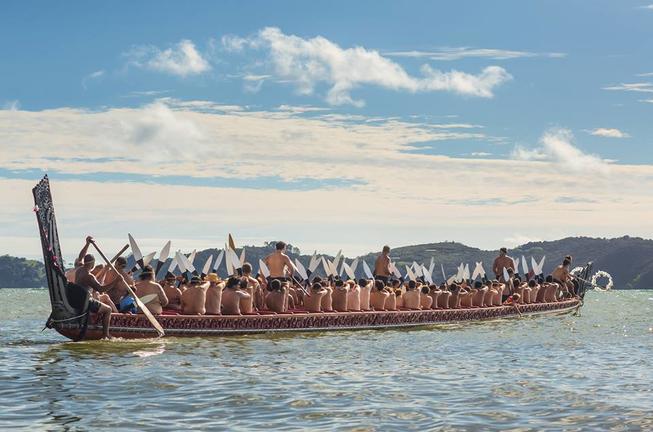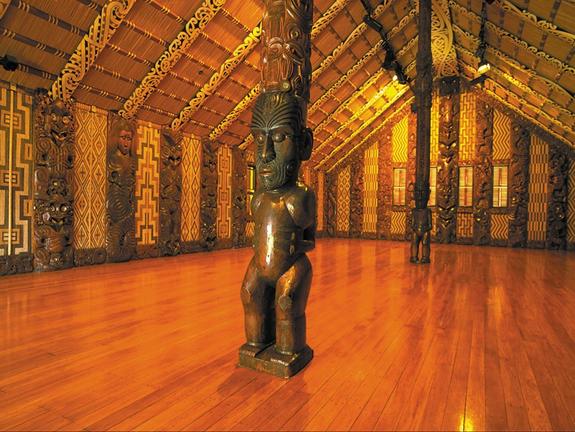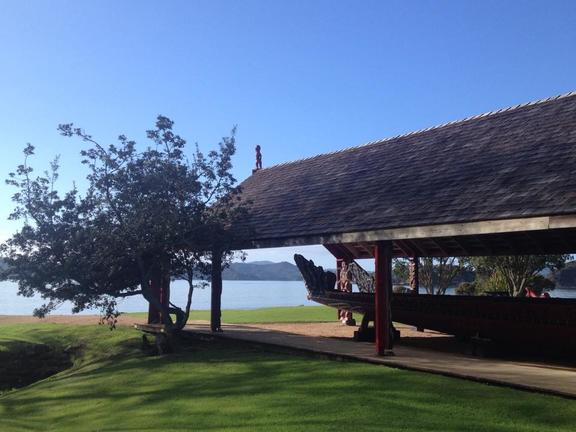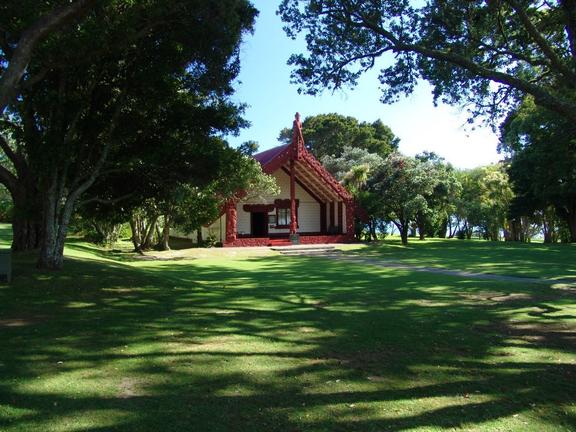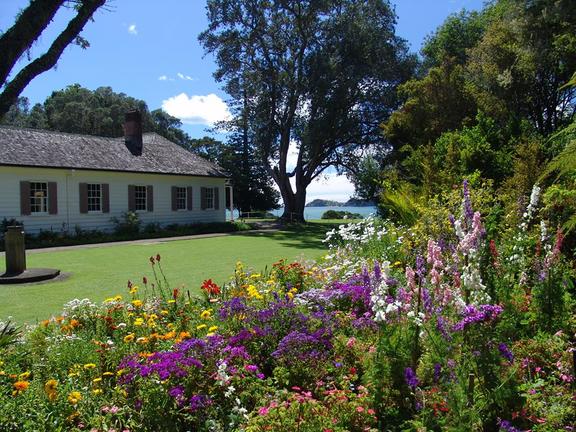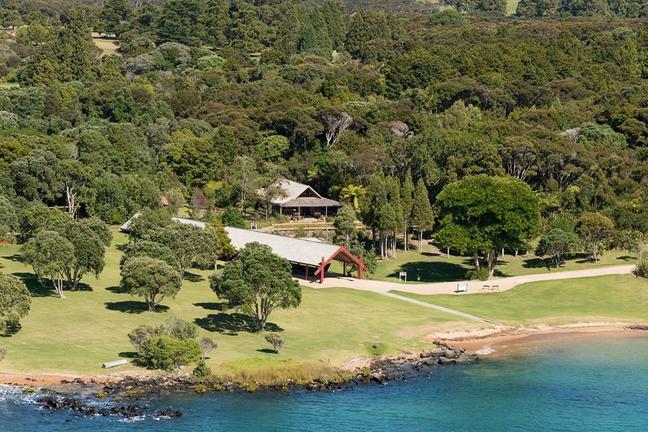The Waitangi Treaty Grounds is the place where Māori chiefs first signed their accord with the British Crown – the Treaty of Waitangi – Te Tiriti of Waitangi, New Zealand’s founding document.
The Treaty Grounds feature the historic Treaty House, the magnificently carved meeting house and the world’s largest ceremonial war canoe. Enjoy strolling through one of New Zealand’s great beauty spots with its panoramic views of the Bay of Islands.
The Treaty House was originally known as ‘the Residency’. It is where James Busby conducted much of his official business as the British government’s representative in New Zealand from 1833 to 1840. It was also home for James and his wife Agnes and their six children. The original house was pre-cut in Sydney of Australian hardwood and shipped to New Zealand for assembly on site in 1834. In 1840 it consisted of a parlour, or living room, one large bedroom, a central hall and a small dressing room. A separate building housed the kitchen, store room and servants’ room. Busby added three bedrooms at the back in 1841. The house and its associated farm remained in the family’s possession until 1882, when the estate was sold. Over the next 50 years the house was neglected and became almost derelict. After the Bledisloe purchase in 1932 it underwent major restoration work, first in 1933, when it was named the Treaty House, and again in 1990. Today you can see the original bedroom and parlour as they might have looked in 1840. In other rooms, an exhibition features everyday life in the Busby household, on the farm and around the Bay of Islands in the 1830's and 40's. Other displays tell the story of the gift of the Waitangi estate to the nation and the restoration of the house.
